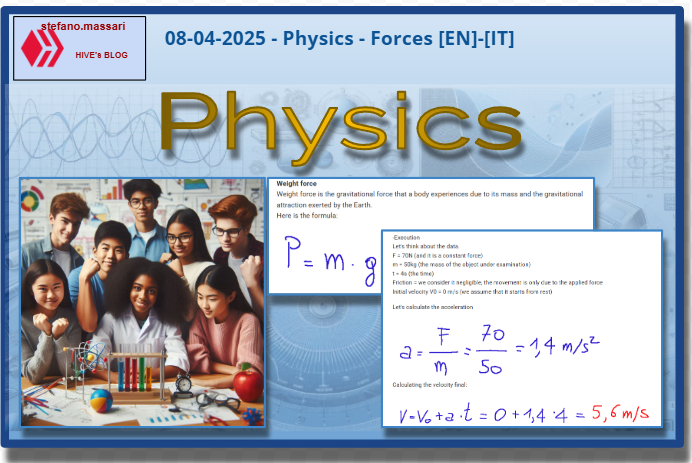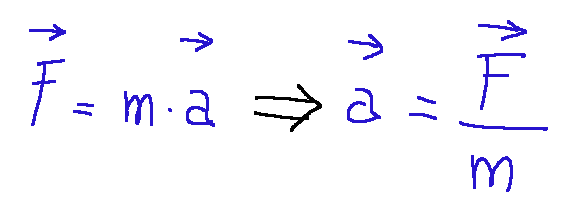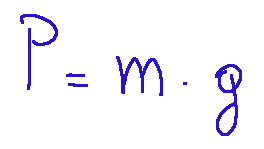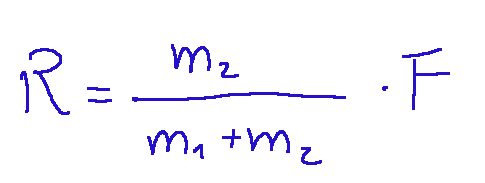
~~~ La versione in italiano inizia subito dopo la versione in inglese ~~~
ENGLISH

08-04-2025 - Physics - Forces [EN]-[IT]
With this post I would like to give a brief instruction about the topic mentioned in the subject
(code notes: X_89-88)
Forces

image created with artificial intelligence, the software used is Microsoft Copilot
Introduction
What are forces in physics?
We can say that forces in physics are interactions that can modify the state of rest or motion or deform an object.
The Fundamental Law of Dynamics
The fundamental law of dynamics, or Newton's second law, describes the relationship between the force acting on a body, its mass and the acceleration it experiences.
Mathematically we can write it as follows:

Weight force
Weight force is the gravitational force that a body experiences due to its mass and the gravitational attraction exerted by the Earth.
Here is the formula:

Where:
𝑃 = the force of weight (measured in Newtons, N)
𝑚 = the mass of the body (measured in kilograms, kg)
𝑔 = the gravitational acceleration, which on the Earth's surface is approximately equal to 9.8 m/s^2
Let's try to explain what happens on an inclined plane
A body of mass m that moves along a smooth inclined plane is subjected to two forces: the force of weight 𝑃, determined by the mass and the acceleration of gravity and the constraining reaction 𝑁, which the plane opposes in a direction normal to itself.
The force of weight can be broken down into its 2 components, parallel and perpendicular to the plane.
What happens on a rough inclined plane
On a plane with a rough surface, the component of the force of weight parallel to the plane is opposed by the force of friction. This has a modulus equal to the product of the constraint reaction N, exerted between the body and the plane, and the coefficient of dynamic friction μd. Since there is no acceleration perpendicular to the plane, N is equal and opposite to P⊥.
Passive forces
Tension

Tensions fall into the category of passive forces. Considering a physical system composed of two interacting bodies and an intermediate body, tensions are given by the elastic forces exerted by the intermediate bodies that allow the transmission of forces from one body to the other. In particular, we consider an inextensible thread, of negligible mass, which allows the dragging of a mass attached to one of its ends. When the thread is in tension, each part is in equilibrium and therefore undergoes an equal and opposite force from both sides. This force is then transmitted throughout the wire up to the ends where the tension towards the inside of the wire itself is balanced.
Exercise
If we apply a constant force F = 70 N to a 50 kg block in the absence of friction. After 4 seconds, what will the speed be?
-Execution
Let's think about the data.
F = 70N (and it is a constant force)
m = 50kg (the mass of the object under examination)
t = 4s (the time)
Friction = we consider it negligible, the movement is only due to the applied force
Initial velocity V0 = 0 m/s (we assume that it starts from rest)
Let's calculate the acceleration

Calculating the velocity final:

Result
the speed reached after 4 seconds is 5.6 m/s
Forces transmitted by ropes
Ropes are also present in the field of forces, I'll try to explain why.
A rope is a body of negligible mass, inextensible and incompressible, capable of transmitting forces from one end to the other: when forces are transmitted through ropes, the force is applied to one body and transmitted to the other. The overall result is that the two bodies move as one and therefore with the same acceleration a.
Acceleration can be calculated by referring to Newton's second law. It is expressed as follows:

Contact forces
When two bodies are attached and are pushed against each other by an external force F, the transmission of force occurs by contact. The motion therefore occurs as if the two bodies, one of mass m1 and the other of mass m2, were a single body of mass equal to m1 + m2.

In the formula expressed below, R represents the resultant force or the equivalent acceleration weighted by the mass 𝑚2, or the tension of the string of a system.

Apparent forces
Apparent forces are forces that appear to act on a body when one is in a non-inertial reference frame, that is, a frame that moves with acceleration relative to an inertial reference frame. These forces are not real forces, but derive from the perception of the relative motion between the reference frame and the object being analyzed.
Here is a list of apparent forces:
-Centrifugal force
-Coriolis force
-Apparent force in an elevator
-Apparent force in an accelerated vehicle
-Apparent forces on a roller coaster
-Apparent force during braking
Conclusions
Forces in physics represent one of the fundamental aspects that regulate the behavior of objects and systems in the natural world. They are vectors that act on masses and cause effects.
Question
Before Newton, it was thought that an object would naturally stop if not pushed (by Aristotle). Did you know that it was Newton who overturned this concept by saying that if a body moves in the absence of forces it will continue to move forever?

ITALIAN

08-04-2025 - Fisica - Le forze [EN]-[IT]
Con questo post vorrei dare una breve istruzione a riguardo dell’argomento citato in oggetto
(code notes: X_89-88)
Le forze

immagine creata con l’intelligenza artificiale, il software usato è Microsoft Copilot
Introduzione
Che cosa sono le forze in fisica?
Possiamo dire che le forze in fisica sono delle interazioni che possono modificare lo stato di quiete o di moto oppure deformare un oggetto.
La legge fondamentale della dinamica
La legge fondamentale della dinamica, o seconda legge di Newton, descrive la relazione tra la forza che agisce su un corpo, la sua massa e l'accelerazione che subisce.
Matematicamente la possiamo scrivere come segue:

Forza peso
La forza peso è la forza gravitazionale che un corpo subisce a causa della sua massa e dell'attrazione gravitazionale esercitata dalla Terra.
Qui di seguito la formula:

Dove:
𝑃 = la forza peso (misurata in Newton,N)
𝑚 = la massa del corpo (misurata in chilogrammi, kg)
𝑔 = l'accelerazione gravitazionale, che sulla superficie terrestre è approssimativamente pari a 9,8 m/s^2
Proviamo a spiegare cosa succede su un piano inclinato
Su un corpo di massa m che si muove lungo un piano inclinato liscio agiscono due forze: la forza peso 𝑃, determinata da massa e accelerazione di gravità e la reazione vincolare 𝑁, che il piano oppone in direzione normale a sé stesso.
La forza peso può essere scomposta nelle sue 2 componenti parallela e perpendicolare al piano.
Cosa succede su un piano inclinato scabro
Su un piano con superficie scabra, alla componente della forza peso parallela al piano si contrappone la forza d’attrito. Questa è in modulo pari al prodotto tra la reazione vincolare N, esercitata tra il corpo e il piano, e il coefficiente di attrito dinamico μd. Dal momento che non c'è nessuna accelerazione perpendicolare al piano, N è uguale e contraria a P⊥.
Forze passive
La tensione

Le tensioni rientrano nella categoria di forze passive. Considerando un sistema fisico composto da due corpi che interagiscono e un corpo intermedio, le tensioni sono date dalle forze elastiche esercitate dai corpi intermedi che consentono la trasmissione delle forze da un corpo all'altro. In particolare si considera un filo inestensibile, di massa trascurabile, che consente il trascinamento di una massa attaccata ad un suo estremo. Quando il filo è in tensione, ogni sua parte è in equilibrio e quindi subisce una forza uguale ed opposta da entrambi i lati. Tale forza è quindi trasmessa in tutto il filo fino agli estremi in cui si ha il bilanciamento della tensione verso l’interno del filo stesso.
Esercizio
Se applichiamo una forza costante F = 70 N a un blocco di 50 kg in assenza di attriti. Dopo 4 secondi la velocità raggiunta quale sarà?
-Svolgimento
Ragioniamo sui dati.
F = 70N (ed è una forza costante)
m = 50kg (la massa dell'oggetto in esame)
t = 4s (il tempo)
Attrito = lo consideriamo trascurabile, il movimento è solo dovuto alla forza applicata
Velocità iniziale V0 = 0 m/s (presumiamo che parta da fermo)
Calcoliamo l'accelerazione

Calcolo della velocità finale:

Risultato
la velocità raggiunta dopo 4 secondi è 5,6 m/s
Forze trasmesse mediante funi
Anche le funi sono presenti nel campo delle forze, provo a spiegare perché.
Una fune è un corpo di massa trascurabile, inestensibile e incomprimibile, in grado di trasmettere forze da un capo all’altro: quando le forze sono trasmesse attraverso funi, la forza viene applicata su un corpo e trasmessa all'altra. Il risultato complessivo è che i due corpi si muovono come un tutt'uno e quindi con la medesima accelerazione a.
L’accelerazione può essere calcolata facendo riferimento alla seconda legge di Newton. Essa è espressa nella seguente maniera:

Forze di contatto
Quando due corpi sono attaccati e vengono spinti l'uno contro l'altro da una forza esterna F, la trasmissione della forza avviene per contatto. Il moto quindi avviene come se i due corpi, l’uno di massa m1 e l’altro di massa m2, fossero un unico corpo di massa pari a m1 + m2.

Nella formula espressa qui di seguito R rappresenta la forza risultante o l’accelerazione equivalente pesata dalla massa 𝑚2, oppure la tensione della corda di un sistema.

Forze apparenti
Le forze apparenti sono forze che sembrano agire su un corpo quando ci si trova in un sistema di riferimento non inerziale, ovvero un sistema che si muove con accelerazione rispetto a un sistema di riferimento inerziale. Queste forze non sono vere forze, ma derivano dalla percezione del movimento relativo tra il sistema di riferimento e l'oggetto in analisi.
Qui di seguito un elenco delle forze apparenti:
-Forza centrifuga
-Forza di Coriolis
-Forza apparente in un ascensore
-Forza apparente in un veicolo accelerato
-Forze apparenti su montagne russe
-Forza apparente durante la frenata
Conclusioni
Le forze in fisica rappresentano uno degli aspetti fondamentali che regolano il comportamento degli oggetti e dei sistemi nel mondo naturale. Sono vettori che agiscono sulle masse e causano degli effetti.
Domanda
Prima di Newton si pensava che un oggetto si fermasse naturalmente se non spinto (da Aristotele). Sapevate che fu proprio Newton a ribaltare questo concetto dicendo che se un corpo si muove in assenza di forze continuerà a muoversi all’infinito?
THE END